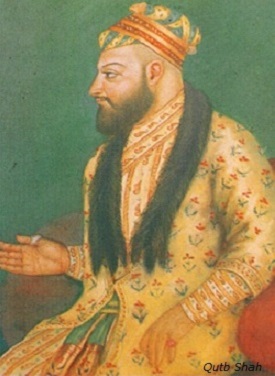
- Medieval Indian History - Home
- Kingdoms of North India
- The Rajputs
- The Invaders
- Delhi Sultanate
- The Khilji Sultans
- Tughlaq Sultans
- Lodi Sultans
- New Kingdoms
- Religion
- The Sikh Movement
- Babur’s Advent into India
- Major Battles
- Significance of Babur's Conquest
- Humayun’s Conquest
- Humayun’s Downfall
- Sur Empire
- Akbar the Great
- Early Phase of Akbar’s Reign
- Expansion of Mughal Empire
- Akbar’s Administrative System
- Akbar’s Organization of Government
- Akbar’s Relation with Neighbours
- Rebels during Mughal Empire
- Deccan & South India
- Conquest of South – I
- Conquest of South – II
- Deccan’s Cultural Contribution
- Political Development Mughals
- Nur Jahan
- Shah Jahan’s Rebel
- Mughals’ Foreign Policy
- Mansabdari System
- Social Life under the Mughals
- Nobles & Zamindars
- Trade & Commerce
- Mughals’ Cultural Developments
- Language, Literature & Music
- Religious Ideas & Beliefs
- Problems of Succession
- Aurangzeb’s Reign & Religious Policy
- North-East India
- Popular Revolts & Movements
- Rise of Maratha
- Administrative System of Shivaji
- Aurangzeb & Deccani States
- Reference and Disclaimer
Deccans Cultural Contribution
The Deccani states had a number of cultural contributions to their credit. Adil Shah was very fond of organizing discussions with Hindu and Muslim saints.
Adil Shah invited Catholic missionaries to his court, much before Akbar had done so. He had an excellent library to which he appointed the well-known Sanskrit scholar, Vaman pandit. Patronage of Sanskrit and Marathi was continued by his successors.
Ibrahim Adil Shah II (1580-1627), the successor of Adil Shah, ascended the throne (of Bijapur) at the age of nine. He was very attentive of the poor, and had the title of abla baba, or Friend of the Poor.
Adil Shah II was very fond of music; he composed a book namely Kitab-e-Navras (Book of Nine Rasas). In this book, he set various musical modes or togas. In his songs, he freely prayed the goddess of music and learning, Saraswati. Due to his broad approach, he came to be called as Jagat Guru.
Adil Shah II, further, built a new capital, Nauraspur; where he invited a large number of musicians (to settle). He offered patronage to all, including Hindu saints and temples. This included grants to Pandharpur, the center of the worship of Vithoba, which became the center of the Bhakti movement in Maharashtra.
Qutb Shah employed both Hindus and Muslims people in his military, administrative, and diplomatic departments.
Golconda was the popular intellectual resort for the literary men. Sultan Muhammad Qutb Shah (who was a contemporary of Akbar) was very fond of both literature and architecture.
Sultan Muhammad Qutb Shah wrote in Dakhini Urdu, Persian, and Telugu and left an extensive collection. He was the first who introduced a secular note in poetry.

Qutb Shah not only wrote about God and the Prophet (their praise), but he also wrote about nature, love, and the social life of his time.
The successors of Qutb Shah and many other poets and writers of his time adopted Urdu as a literary language. In addition to Urdu language, Persian, Hindi, and Telugu were also significant for the idioms and vocabulary.
Urdu gradually percolate to north India from the Deccan by the eighteenth century.
In 1591-92, Quli Qutb Shah founded the city Hyderabad, he also constructed many buildings, the most famous of which is the Char Minar.
The Gol Gumbaz (the mausoleum of Mohammed Adil Shah, Sultan of Bijapur) which was built in 1656 has the largest single dome ever constructed. The architect of Gol Gumbaz was Yaqut of Dabul.